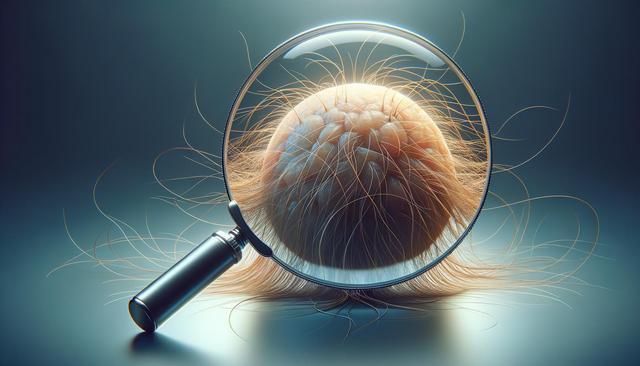What Is Alopecia?
Alopecia refers to a group of conditions that cause hair loss, which can affect not only the scalp but also other areas of the body. This medical condition can present in various forms, each with different symptoms and causes. While hair shedding is a normal part of the hair growth cycle, alopecia leads to more significant and often sudden hair loss that may be temporary or permanent. The most common types include alopecia areata, androgenetic alopecia, and telogen effluvium. Understanding the nature and type of alopecia is essential for identifying the appropriate steps for management and treatment.
The causes of alopecia can vary widely. Some of the most common contributors include:
- Genetics and hereditary factors
- Autoimmune responses, where the body mistakenly attacks its own hair follicles
- Hormonal imbalances, especially during pregnancy, menopause, or thyroid disorders
- Stress or trauma (both physical and emotional)
- Certain medications or medical treatments like chemotherapy
Because alopecia can stem from multiple sources, consulting with a healthcare provider for a proper diagnosis is crucial. They can help determine if the hair loss is a symptom of an underlying health issue or a condition in itself.
Types of Alopecia
Several distinct types of alopecia exist, each with its own set of characteristics and potential outcomes. The most recognized form is alopecia areata, an autoimmune condition that results in patchy hair loss, often in circular patterns. This can progress to alopecia totalis, where all scalp hair is lost, or even alopecia universalis, involving complete body hair loss.
Androgenetic alopecia, commonly referred to as pattern hair loss, is another prevalent type. It typically affects men and women differently: men may experience a receding hairline and bald spots, while women often notice thinning hair along the crown.
Other types include:
- Traction alopecia, caused by hairstyles that pull tightly on hair over time
- Scarring alopecia, linked to inflammation that damages hair follicles permanently
- Telogen effluvium, which involves a temporary shedding of hair due to stress or hormonal shifts
Each type may require a different approach for management or treatment, making it important to identify the specific condition accurately.
Understanding the Impact of Alopecia
The effects of alopecia extend beyond physical appearance. For many individuals, hair plays a significant role in personal identity and self-esteem. Losing hair unexpectedly can lead to emotional distress, anxiety, and even depression. Social situations may become uncomfortable, and individuals might avoid certain activities or events due to their appearance.
Children and teenagers with alopecia can be especially vulnerable to emotional challenges. Bullying or teasing in school environments may exacerbate feelings of isolation. Adults also face difficulties, particularly in professional settings where appearance might influence confidence or perceptions.
Some of the emotional impacts include:
- Reduced self-confidence
- Increased social withdrawal
- Feelings of embarrassment or shame
- Frustration over a lack of control
Support from health professionals, family, and peer groups can play a key role in helping individuals cope with alopecia. Psychological counseling or joining support communities may provide a safe space to share experiences and find encouragement.
Diagnosis and Treatment Options
Diagnosing the exact cause of alopecia typically involves a comprehensive medical history, physical examination, and sometimes lab tests or scalp biopsies. A dermatologist often leads the diagnosis process and will assess the pattern and extent of hair loss. Early diagnosis can improve the chances of successful management, especially in cases where underlying conditions are involved.
Treatment depends on the type and severity of alopecia. Options may include:
- Topical or oral medications to stimulate hair growth or manage autoimmune responses
- Therapies such as corticosteroid injections for inflammation-related alopecia
- Light or laser treatments aimed at promoting follicle activity
- Hair restoration procedures for long-term solutions
- Lifestyle changes, including stress management and nutritional adjustments
Not all treatments work for everyone, and results can take time. Some individuals may choose to use wigs, scarves, or other cosmetic solutions to manage their appearance while seeking or undergoing treatment. Open communication with a healthcare provider is crucial to setting realistic expectations and developing a tailored plan.
Living with Alopecia
Adapting to life with alopecia involves a combination of physical, emotional, and social adjustments. While medical interventions may help, daily coping strategies are equally important. Building a positive mindset can empower individuals to navigate the challenges of hair loss with resilience and confidence.
Here are some practical tips for managing life with alopecia:
- Connect with support groups or communities, either locally or online
- Explore options for head coverings or hairpieces that enhance comfort and style
- Practice stress-reducing techniques like meditation, yoga, or regular exercise
- Educate friends and family about the condition to foster understanding and reduce stigma
Many people with alopecia find strength by sharing their stories and advocating for awareness. Public figures and awareness campaigns have contributed to reducing the stigma associated with hair loss, helping others feel less alone. Ultimately, embracing individuality and focusing on overall well-being can lead to a more fulfilling life, with or without hair.
Conclusion
Alopecia is a complex condition that can affect individuals of all ages and backgrounds. While hair loss may begin as a physical concern, its emotional and psychological implications are equally significant. Understanding the different types of alopecia, seeking accurate diagnosis, and exploring available treatment options are essential steps toward managing the condition effectively. For those living with alopecia, support, education, and self-care can make a meaningful difference in quality of life. Whether through medical treatment or personal empowerment, there are paths forward that honor both health and self-expression.




Leave a Reply